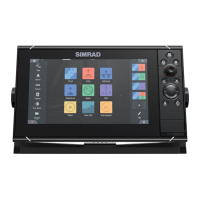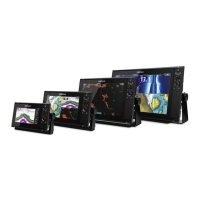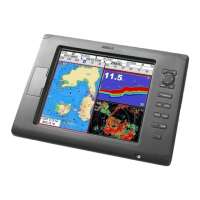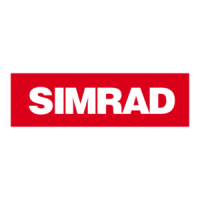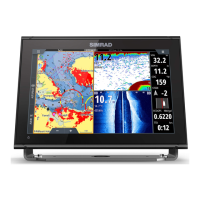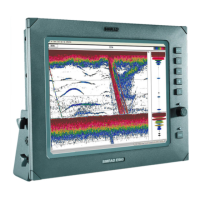Ú
Note: The lock function is not available on a unit which has autopilot control!
If the NSS evo2 is part of an AP24/AP28 system, all other autopilot control units can be locked
for autopilot control from the AP24/ AP28 control unit.
If the NSS evo2 is part of an AP70/AP80 system, only the AP70/AP80 master autopilot
controller can give control to the unit autopilot controller. Refer to "Using the in an AP70/AP80
system" on page 58.
Sea state filter
Ú
Note: This option is not available for NAC-1 autopilot computers.
The Seastate filter is used to reduce rudder activity and autopilot sensitivity in rough weather.
Setting options are:
• OFF
Seastate filter is disabled. This is the default setting.
• AUTO
Reduces rudder activity and autopilot sensitivity in rough weather by an adaptive process.
The AUTO setting is recommended if you want to use the seastate filter.
• MANUAL
Linked to the steering response control settings described previously. It may be used to
manually find the optimum combination of course keeping and low rudder activity in
rough but steady sea conditions.
Sailing parameters
Ú
Note: Sailing parameter settings are only available if the boat type is set to Sail in the
Autopilot Commissioning dialog and are not available for NAC-1 autopilot computers.
Tack time
When performing a tack in WIND mode, the rate of turn (tack time) can be adjusted. This
gives single-handed sailors time to handle the boat and the sails during a tack.
A turn performed without shifting wind side, is also made at a controlled turn rate.
Tack angle
This value is used to preset the course change used when tacking in AUTO mode. By
pressing the port and starboard indicators in the autopilot pop-up the course changes as
much as this value.
Wind function
With wind function set to AUTO, the autopilot automatically selects between apparent and
true wind steering. AUTO is default and recommended for cruising.
When the boat is running, it is also surfing on the waves. This may lead to significant changes
in boat speed, and thereby also changes in apparent wind angle. True wind steering is
therefore used when running, while steering to apparent wind is used when beating or
reaching.
Apparent wind steering is preferred when you want to achieve maximum boat speed. The
autopilot tries to maintain a constant apparent wind angle to get maximum thrust from a
given trim of the sails.
When sailing in closed waters, the apparent wind angle may change temporarily due to wind
gusts. It may then be preferred to sail to the true wind.
VMG optimizing
You can optimize the VMG to wind. When selected, the function is active for 5–10 minutes
after a new wind angle has been set and only when beating.
Layline steering
Layline steering is useful when navigating. Cross Track Error (XTE) from the navigator keeps
the boat on the track line. If the XTE from the navigator exceeds 0.15 NM, the autopilot
calculates the layline and track towards the waypoint.
62
Autopilot | NSS evo2 Operator Manual
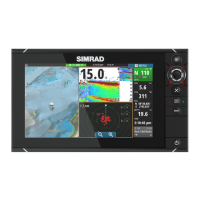
